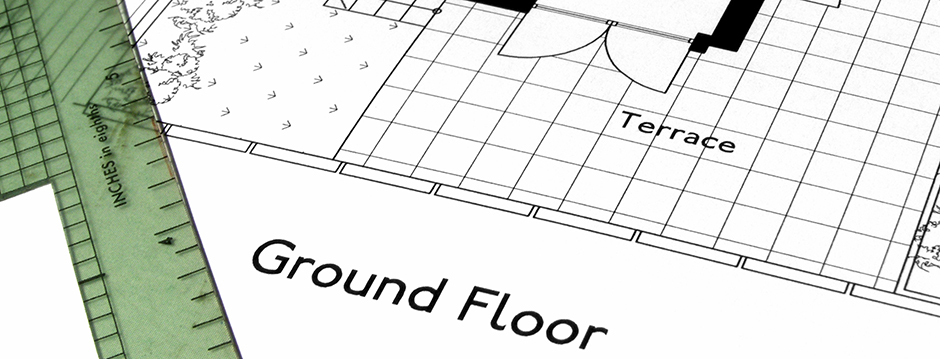
Flood Prevention & Control on Construction Sites
Flooding can be a serious issue in some parts of the UK. Whether it is from rivers or seawater, many places are at risk of extreme levels in certain conditions.
Excess rain is consistently becoming an issue, too. This is particularly apparent in built-up areas, where the water can't get away through drainage systems or by soaking into grass or ground.
Construction sites are no different. The lack of existing drainage, plus the lack of suitable ground materials, means rainwater can sit and cause issues. It is therefore vital to try and prevent flooding from causing an issue in the first place and have an action plan in place if it does occur.
Speedy has flood pumps and cleaning equipment available if you have to restore your construction site after a flood. With over 200 depots across the UK, and 4-hour delivery available on our most popular 350 products, trust Speedy to help you when you need it the most.
How to Prevent Flooding on Construction Sites
The first step to reducing the damage and disruption caused by floodwater on construction sites is to limit its ability.
Every site should have a flood plan, which includes how to protect staff, how to protect equipment and minimise health and safety risks. The Environment Agency has a community flood plan template on its website.
It should also include emergency numbers, such as the fire brigade, gas network, and electricity supplier, should there be an issue.
Understand your site
The first vital stage is to understand the locality of your site. This should have been done during research and plans. How far are the closest bodies of water to the site, whether rivers, reservoirs, or the sea? Has there been a history of flooding?
The Environment Agency website has flood maps, which show risk levels and point out bodies of water. There is a separate flood map for planning available, and these checks should have already been done before planning permission was granted if applicable.
The Met Office provides free emergency flood alerts, which are simple to subscribe to.
Use ground protection mats
Ground protection mats can prevent vehicles from churning up the ground and causing trenches and breaking up the ground surface. These areas are prime targets for rainwater to sit, and not flow away.
Vehicles can also cause mud if the ground is wet, which not only blocks drains and other drainage systems but also requires additional work to limit the spread of mud both on and off-site.

Minimise vehicle use
Vehicles are part of everyday tasks in construction, from deliveries to transportation. However, if there is a risk of heavy rain and mud, limit where vehicles can go.
Ensure walking and driving paths are kept separate, and that driving routes are regularly maintained to ensure they're still passable, using mats and drainage solutions.
Use sandbags to prevent accommodation flooding
Accommodation and office buildings need to be protected using sandbags and in serious cases, flood defence barriers. They should be raised on a safe, level platform if your risk of flooding is high. Upper-floor offices are available, accessed by stairs.
What to Do if Your Construction Site Floods
Follow the flood plan
This plan should be in place even if your risk of flooding is low. This should set out what to do in the case of a flood, how people can protect themselves, and what to do step-by-step.
It should contain information about the local fire service if flood water needs to be pumped off-site and about your electricity and gas suppliers.
Turn off the electrical supply
If your site has a main electricity supply, turn this off. You may also want to turn off your gas supply, which may need to be done by the gas board. Move any vehicles and generators to higher ground, if possible.
Don't use gas or electric devices again until they have been checked for their safety. Only turn them back on when all flood water has been drained away.
Be aware of pollution
Move any chemicals which could get into the water and cause pollution to a dry, high area.
Avoid coming into contact with flood water, as it can contain pollution and chemicals. If containers have been damaged by flood water, they could also release fumes from the chemicals, so wear breathing and eye protection. You should be aware of what is on site, and the dangers these chemicals pose.
If the site contained suspected asbestos, you should avoid entering the site until it has been checked by a professional and the risk of asbestos has been cleared.
Droppings and waste from rats are also common in standing flood water, and your drainage system may have overflown, which causes disease of their own accord.
Ensure all cuts are covered with plasters, and cover the skin with suitable clothing to avoid contact. Wash your skin and hands if you do come into contact with the water.
Drain the water away
Sometimes, flood water can drain away of its own accord. Check nothing has been left behind, such as sewage.
In some cases, it may need some help to drain away. You can hire flood pumps from Speedy, which can drain excess water and remove it from your site. Ensure you inform the Environment Agency or water company if pumping into rivers or main drains.
Speedy Solutions can also provide sites with specialist pumps, such as solids handling pumps or drainer pumps if the level of your water is extreme.

Clean the site
Even if you can't see any pollution or damage, it doesn't mean it doesn't exist. Surfaces can still be left with germs and bacteria from the water, even when dried, so all surfaces need to be disinfected and cleaned before it is safe to use the site again.
Pressure washers are a great way to clean machinery and surfaces without coming into contact with them. Wear PPE to protect yourself from the pressure of the water and from coming into contact with the infected surfaces. You should have disposable clothing which you can throw away.
Dispose of all food on the flood site, and boil water until it is declared safe to use. Only drink bottled water, stored in a safe place.
- 2024
- 2023
- December 2023 (13)
- November 2023 (10)
- October 2023 (6)
- September 2023 (10)
- August 2023 (20)
- July 2023 (21)
- June 2023 (17)
- May 2023 (17)
- April 2023 (17)
- March 2023 (14)
- February 2023 (15)
- January 2023 (7)
- 2022
- December 2022 (6)
- November 2022 (12)
- October 2022 (24)
- September 2022 (14)
- August 2022 (12)
- July 2022 (15)
- June 2022 (18)
- May 2022 (14)
- April 2022 (9)
- March 2022 (5)
- February 2022 (5)
- January 2022 (2)
- 2021
- December 2021 (7)
- November 2021 (10)
- October 2021 (1)
- September 2021 (1)
- August 2021 (3)
- July 2021 (3)
- June 2021 (4)
- May 2021 (1)
- April 2021 (1)
- March 2021 (2)
- February 2021 (1)
- January 2021 (1)
- 2020
- 2019
- 2017
- 2016
- 2014
- 2013
- 2012
- 2011


